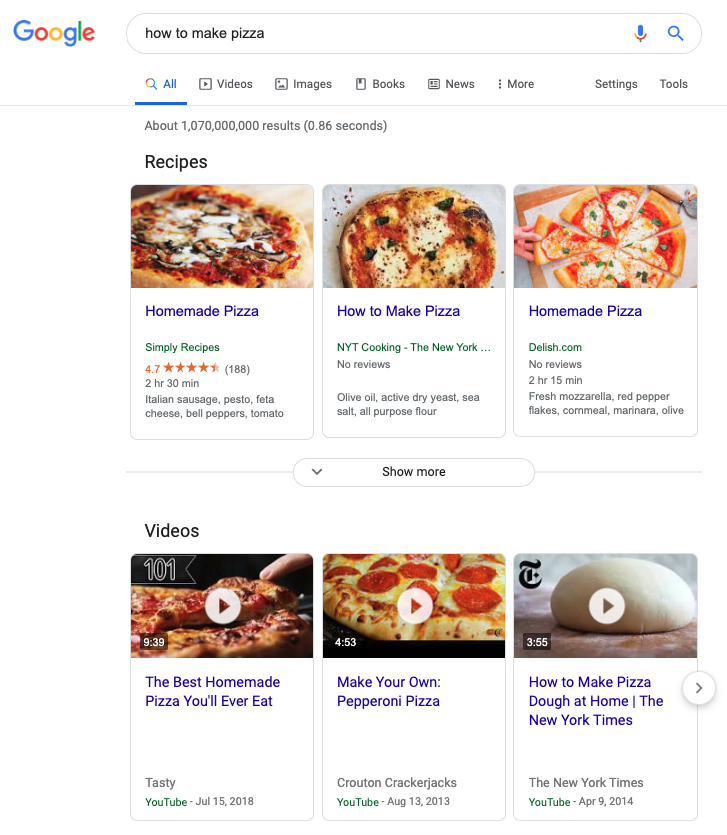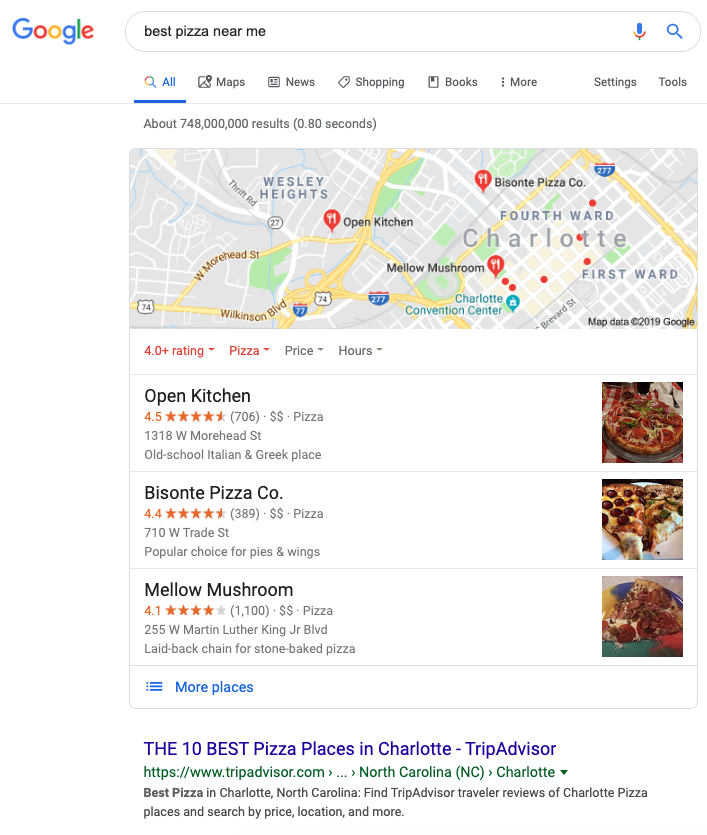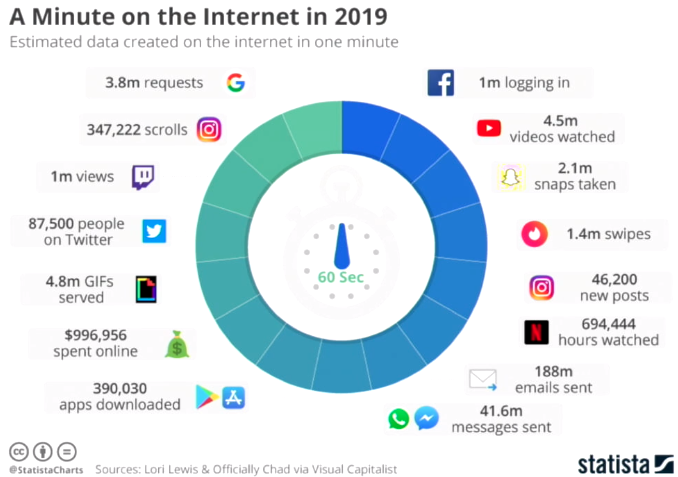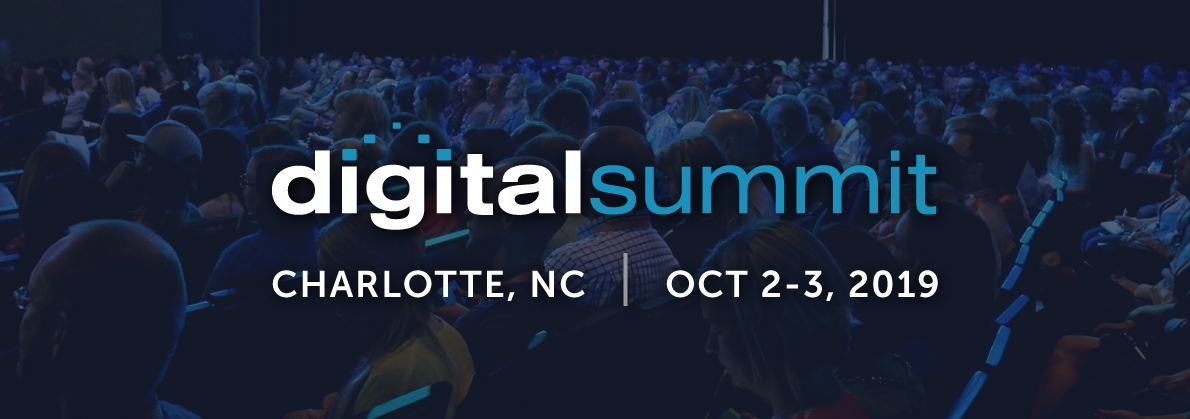
Digital Summit 2019 Charlotte
15
minute read time
“There is no such thing as digital marketing. Marketing IS digital.”
Sean Phaler , Ingersoll Rand
The New SEO: Search Experience Optimization
“What is SEO?”
Whenever we’re asked this question, the answer, in short, has been simple - Search Engine Optimization. But the reality is, when this term was first coined in the late 1990s, the same search engines we engage with today are entirely different platforms.
As Search Engine Optimizers, we often update our organic strategies based on Google’s ever-changing algorithm – the specific ranking factors and tactics you’ve probably read about over and over again:
- Long-tail keywords
- Content is king
- Link building
- Technicality: schema, site speed, responsive design, etc.
Sometimes we get so caught up on focusing on the optimizations listed above that we forget to step back and look at the bigger picture. What purpose do these ranking factors serve? They all affect the user experience. It’s time to start looking at Google as a search experience, not a search engine.
Search queries are now becoming more question based and localized. The SERPs (search engine result pages) for these evolving search queries are looking less like the organic results we're used to - rows and rows of ranked webpages - and more like the examples below.
So you've read the blogs and books. You've attended the workshops and webinars. You've trained, you've targeted, you've tested. Now what?
When you work in an industry like digital marketing that is ever evolving, one of the biggest challenges is not just keeping up with the trends, but staying ahead of the curve.
At Digital Summit Charlotte, hosted at the Charlotte Convention Center, I specifically attended sessions that focused on aspects of digital marketing that are not only new and emerging, but perhaps less focused on or talked about; strategies that are more on the edge, thus giving us more of the edge.
Here are the top 2 digital marketing trends of 2019 and strategies to consider for 2020:
-
The New SEO
-
Digital Advertising Tips
Digital Advertising Tips For 2020
Google Display Ads
If you've ever managed Display Ad campaigns, you've probably said or heard:
"I'm not sure that display ads work."
"I've tried it before but didn't see results."
"I have no idea how to accurately measure it."
When Brian Lahey from Genius Monkey presented these statements at Digital Summit Charlotte, I couldn't relate more.
Here are 4 things you need in order to have a successful display ad campaign:
- Design. If you're going to invest in Display campaigns, you have to be prepared to invest in the design of your ads. Creating responsive and appealing ads is crucial to the success of your Display campaign, so make sure you have a team in place that can offer the design services you need to be competitive in visual advertising.
- Direct. Having an optimized website and relevant landing pages are critical to the prosperity of any ad campaign. But with Display ads, it is an absolute necessity. Targeted and engaged users with Display ads are often still in the early stages of the customer journey. They were not actively searching for your services, but the visualization of your message intrigued them. So once they click on your ad, make sure they don't have to search for what got them there in the first place.
- Don't compare. Search and display campaigns are not interchangeable - they serve different purposes to different audiences. Expecting the same user engagement and the same conversion rate is setting yourself up for disappointment and frustration. This seems obvious, but it can be easy to get caught up on the numbers that allow us to quantify a "successful" vs "unsuccessful" campaign. For Display ads, make sure your team or your client understands that this is not going to produce the same results you might see from a Search campaign.
- Be patient. If you're deciding whether or not a Display campaign is right for you or your client, ask this: "Am I willing to invest in this for at least 6 months?" With search ads, we can hope to see the needle turn, even just a smidgen, in 1 month. With display ads, that same turn of the needle can take 4-6 months. So if you're looking to spend your money on advertising that produces conversions quickly, Display is not right for you.
Display Ads can produce exceptional results and ROI when done right. Just make sure you and/or your client have the right expectations and know the timeline, setup, and management of these campaigns are entirely different than Search.

Featured Articles
You often see these at the top of your SERP when looking up the news or a trending current event. But they happen in other instances too, such as the recipe articles in this "how to" search query. Featured articles are important to take note of, as they are organically generated like featured snippets. Additionally, they include a visual to support the content, which increases the user's search experience and your page's visibility.
YouTube Videos
As a Google product, YouTube videos have become more prevalent in the SERPs over the years. This is yet another tactic for creating a better search experience as videos have shown to be more appealing than text to the average user. Having an optimized YouTube channel with videos that provide answers and expertise on your industry is another way to help earn you a spot at the top.

Local Pack
Perhaps the most apparent search experience feature is Google's Local Pack. That's because 46% of Google searches are now based on location, and 93% of those location-based searches feature the Local Pack. To show up in this Local SEO feature, you must have a Google My Business (GMB) listing, so make sure you have one (it's free!) and make sure it's accurate and optimized. If you are in a geographic area with a high number of competitors, there's no guarantee that you will be featured. However, you can greatly increase your chances by having an average review rating of 4 stars on your GMB listing.
For a further explanation on the importance of having a GMB listing and how it shows up in the SERPs, check out our MozCon Recap blog post.
3rd Party Sites
After the local pack, you'll notice that in Position 1 is TripAdvisor. 3rd party review sites like TripAdvisor and Yelp have historical authority and a variety of content, making it difficult to beat out when it comes to ranking. Users also tend to trust these sites more when it comes to researching local activities. This is why it's important to make sure that your business is listed on these sites, as it is another platform to catch the users eye after leaving the SERP. Both TripAdvisor and Yelp are free to use. Just make sure you check on them and respond to reviews!
The examples above are what we call Position 0, or Rank 0.
Position 0 is becoming the focus for many SEO strategists for 3 core reasons:
- These features look much more appealing to users than rows and rows of titles and descriptions. Featured Snippets are displayed with larger text. Articles, videos, and the Local Pack map use visuals to stand out amongst the text. Showing up in these features, especially when coupled with high organic rankings, ensures maximum visibility for your site.
- Mobile traffic is taking over, which means users are viewing SERPs on a much smaller screen. For us, that means less potential site visibility. In fact, it can sometimes take over 4 scrolls on a mobile device - especially if Google Ads are present - just to reach Rank 1. So snagging a spot in Rank 0 is increasingly important.
- Voice search is also on the rise, most of which are question-based queries. Wanting to give users the best experience, Google is working to conveniently give a direct response that answers the question. If the question asked matches with a Featured Snippet or other SERP feature, Google will use this as the answer, and may even give an immediate response vocally with the content of the Featured Snippet, giving the user no reason to look at the other ranking content.
Google constantly reiterates the importance of websites that have exceptional user-friendly experiences (UX). In the past few years, they've decided to practice what they preach. Google no longer wants to be just a search engine - they want to be a search experience for the curious users they attract, just like any other website.
The difference is, Google will never be just like any other website. Like the "House" in a casino, Google calls the shots - and they never lose. Learn their rules and play their game. Otherwise, don't be surprised when you never hit the jackpot.
Conclusion
All of these insights and tips aside, I learned one core concept at Digital Summit Charlotte that rings true for all aspects of digital marketing.
Focus on your user.
It's easy to get caught up in the algorithm changes and the quantifiable conversions on a spreadsheet. But what separates a good digital marketer from an exceptional one is if you can take that step back. Listen to your audience. Understand your audience. Connect with your audience. That mindset will guide your strategy - and the rest will fall into place.

Featured Snippets & Answer Box
With search queries becoming more question based, especially now that voice search is on the rise, Google realized that having an immediate "answer" to questions not only increases the user experience, but also keeps users on the Google platform rather than navigating to a new website. Featured snippets show up at the top of the SERP and are a product of organic content. Gaining a featured snippet requires strategic and continuous optimization and can be difficult to obtain for highly competitive keywords. But the results have shown to be incredibly beneficial as they become more prevalent in various search queries.
PAA - People Also Ask
Figuring out what featured snippets you can realistically go after can be overwhelming, which is why the PAA feature of Google's SERPs is as useful for SEO strategists as it is for the inquiring users. "People Also Ask" gives us a clue as to the questions users are asking in searches and how to integrate answers to those questions in our content. Each PAA has an answer/snippet pulled from organic content, so going after these questions is a great place to start.

SOCIAL MEDIA ADS
Advertising on social media can be a powerful platform with unanticipated results. However, it is often misunderstood or seen as an enigma to digital marketers.
Here are some social media advertising tips to have a successful campaign:
- Remarketing works. If you have a limited budget or are still hesitant about social media advertising, remarketing is your ticket to more engagement and qualified leads. Larry Kim of MobileMonkey, whose Unicorn Theory of digital marketing continues to intrigue and awe digital marketers, found that remarketing campaigns have 3-5x more conversions than regular ad campaigns. So if you're looking for somewhere to start or your goal is to generate leads, remarketing is your best bet.
- Have a conversation. This is perhaps the most important, yet most forgotten. For a social media campaign to be successful, you cannot just expect your ad copy and budget to do all the work. These various social platforms all serve the same purpose; they let users connect and form communities. To make a significant impact with your ad campaign, you have to connect with the users and give them a community to join within your brand. Make sure you're monitoring your ads for comments and shares. Respond to questions. Address concerns. Let your users know that you see them, you hear them, and you relate to them.
- Set the right expectations. Like mentioned above, most people on social media platforms are there to connect, not purchase a service or product. In most cases, social media campaigns are not meant for conversions, but rather to bring awareness and to establish a brand voice. It’s crucial to remember this when proposing, designing, writing, and managing a social media ad campaign. Set the right expectations for the purpose and goal of your ad campaign, otherwise you'll fall into the "social media ads don't work" trap and you could lose the potential and power that can be harnessed on social media.
YOUTUBE ADS
As video engagement continues to climb, we cannot ignore the power of the very first video search engine. YouTube has 1.9 billion monthly active users (that's twice as many as Facebook) and is responsible for 37% of all mobile internet traffic, according to a 2019 Sandvine report. Despite these staggering numbers, YouTube advertising is often overlooked.
Here are some YouTube advertising tips to decide if it's right for your strategy:
- Budget. According to Jordan Steen, the Cereal Entrepreneur, don't invest in YouTube ads unless you can dish out at least $1,500 a month. This is the threshold to be competitive in any industry.
- Remarketing. Seemingly the key to any starter campaign. Remarketing is an advertising technique that is underutilized, especially for smaller businesses looking to see real conversions from their paid marketing efforts. Because YouTube ads tend to be more expensive, it's difficult to be competitive with large companies that have the financial capabilities to outbid you and the visual assets to outperform you. Instead, put yourself in front of people who have already shown interest in your business.
- Are you a B2B company? Don't rule out YouTube, but don't start here either. YouTube's base is mostly direct consumers, so the time, effort, and money you'll put into creating YouTube ads will be viewed by the wrong target audience. If you have that $1,500 to spend and want to experiment with a new advertising platform, try LinkedIn ads.

“The internet’s noisy. We are all competing against each other for digital attention. Attention is the commodity that we’re all chasing. We all cannibalize each others attention and it's not just [other brands]. Today every single brand is competing for attention against people. ”
Carlos Gil , CEO, Gil Media. Co



